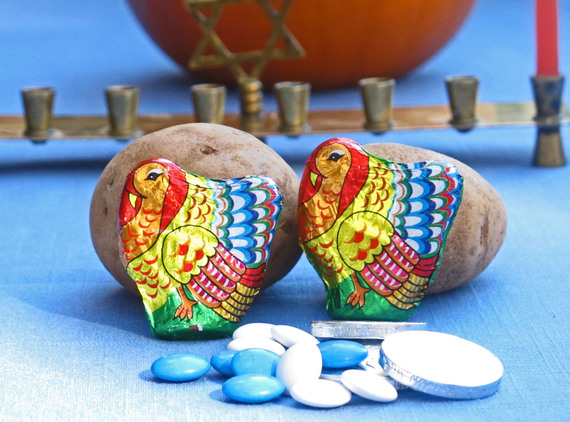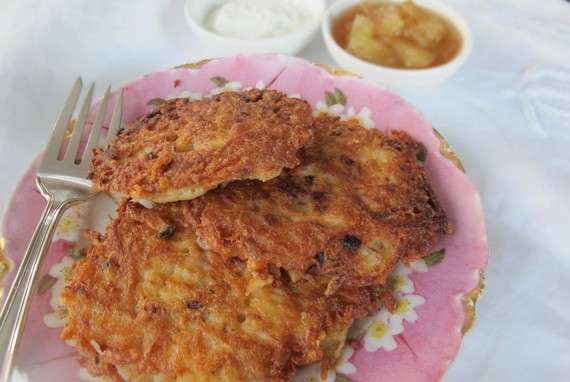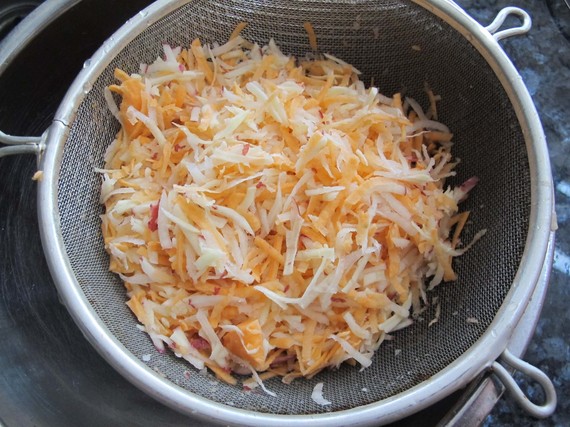Despite what a lot of people think, the Jewish festival of Chanukah does not "move." It is celebrated at the same time every year on the Hebrew calendar, but its timing shifts on Gregorian/Western calendar, depending on how the those two calendar systems align in any given year. Typically Chanukah ends up in December on the calendar we use in the West, reasonably close to Christmas.
But this year, for the first time since 1888 - and not happening again for another 77,798 years, Chanukah will instead coincide with Thanksgiving. And so, was born Thanksgivukkah, a rather ridiculous but also comically ingenious name for the combined holiday.
No matter when it falls, Chanukah means latkes in my house. According to the Jewish Daily Forward, one of my favorite and consistently reliable information sources, "latke" is Yiddish, derived from Russian and refers to a "flat cake of unleavened dough." Today, we associate latkes with potatoes, but before the mid-1800s, they were made of buckwheat flour and before that, their main ingredient was cheese.
"Traditional" Eastern European latkes use potatoes as their base, with onion and perhaps a few other herbs, a bit of flour or matzo meal and an egg or 2 to hold the pancake together.
These days, variations on the latke-theme abound, from the obvious to the extreme. Simple variations include or rely heavily on other vegetables, such as zucchini, carrots, parsnips, celery root, or even pumpkin. More exotic variations change up the flavorings, using ginger or jalapeno or even cloves and cinnamon.
But no matter what you add or subtract, the base of a latke is the oil in which you fry them. Symbolizing the long-lasting, oil lamp flame that lit the Second Temple after the Jewish army called the Maccabees defeated the Syrians in 165 B.C.E., the oil keeps latkes messy to make and delicious to eat.
What do you need to know to make latkes? The basics I've set out below will work with almost any latke recipe. Still, there is always the matter of personal taste and variations in technique. If you've got a tip I left out or a variation on one of mine, do let us know. If you've got a "bone to pick" with my basics, I hearken back to the phrase I heard often growing up - "you've got a different opinion, so what else is new?"
Latkes 101
- When choosing ingredients, keep it simple. Latkes are best with a few fresh ingredients. Unlike making minestrone or stone soup, this is not a time to use every scrap of leftover vegetable you can find in your bin.
For more latke tips, and recipes for the classic potato latke and variations, click here.


